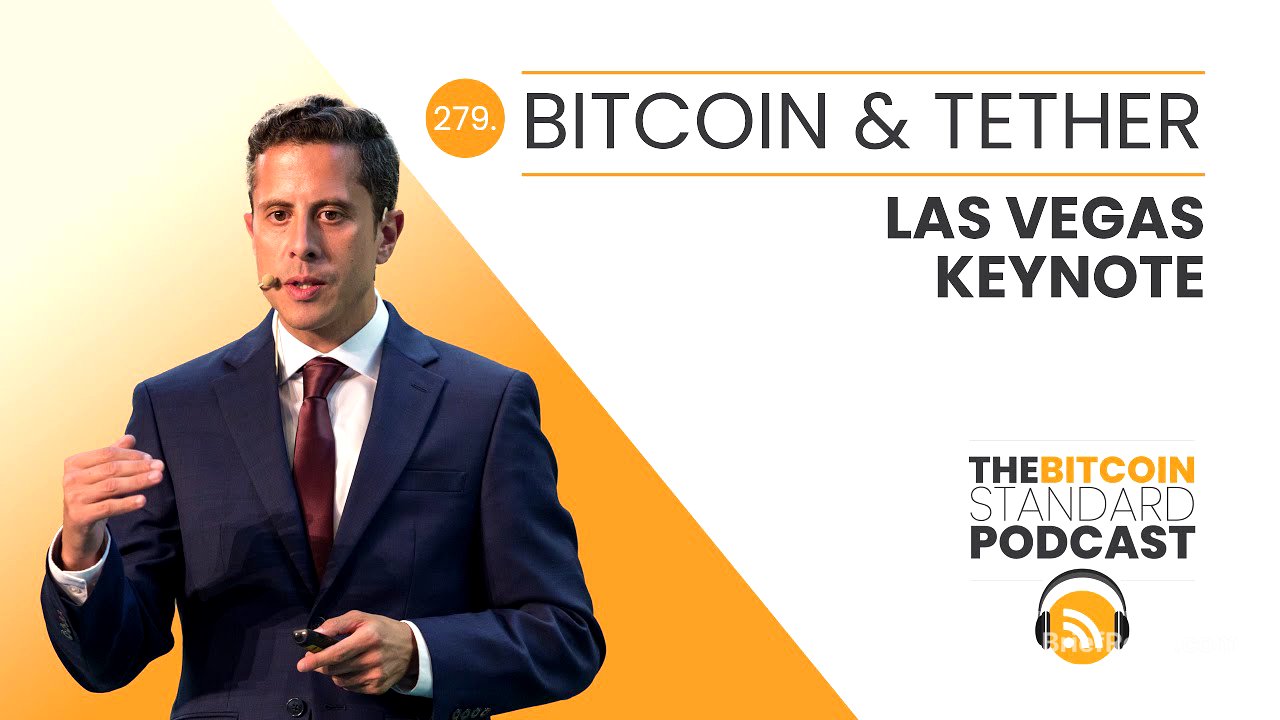TLDR;
Saifedean Ammous discusses the potential impact of Tether's growth on the US dollar and Bitcoin. He argues that even under optimistic scenarios, Tether's influence on the US debt situation is limited due to the enormous budget deficit and existing debt. While Tether's increasing Bitcoin reserves pose a risk of default for Tether, it positions them to transition away from the dollar and potentially revalue Tether upwards, further driving Bitcoin adoption. He also touches on the challenges and future of Bitcoin, including its divisibility and adoption.
- Tether's impact on US debt is limited.
- Tether's Bitcoin reserves could lead to a transition away from the dollar.
- Bitcoin's divisibility may become a challenge in the future.
Tether's Impact on the US Dollar [0:03]
Saifedean starts by questioning the bullish impact of Tether on the US dollar, despite its role in attracting a new generation of buyers for US Treasury bonds. He uses a thought experiment, projecting a 100-fold growth for Tether over the next decade, reaching a $20 trillion market cap by 2035, with 80% of its reserves invested in US bonds across all maturities. He references studies on the impact of quantitative easing (QE) on bond yields, conservatively estimating that every 10% of debt purchased lowers yields by 1%.
Projected Impact on the US Budget [2:01]
He then projects the impact of Tether's treasury purchases on the US budget, considering the current $37 trillion debt and $2 trillion budget deficit. Assuming the debt and liabilities continue to rise at the same rate as the previous decade, he notes this is a conservative assumption, anticipating that the budget will likely worsen due to ongoing wars, tariffs, and consistent spending levels post-COVID. The most optimistic scenario suggests that Tether's treasury purchases could reduce the debt by $3.7 trillion, or 5.4%, over 10 years, but this is unlikely to significantly alter the US's fiscal trajectory.
Tether's Bitcoin Reserves and Potential Transition [6:26]
Saifedean shifts the focus to Tether's own position, considering the impact of potential devaluation or default on their reserves. While devaluation isn't a major issue due to the devaluation of liabilities alongside assets, default poses a significant risk, especially targeted default on Tether's bonds. Tether's strategic investment in Bitcoin, with over 100,000 bitcoins worth over $10 billion, serves as a hedge against these risks. He notes that Bitcoin's appreciating value, combined with the dollar's devaluation, could lead Tether's Bitcoin reserves to surpass its US dollar reserves.
Tether's Potential to Break the Peg Upwards [8:32]
As Tether's Bitcoin reserves grow, they may eventually be able to break the peg with the dollar, revaluing Tether upwards. This would increase demand for Tether at the expense of the dollar, further driving Bitcoin purchases and price appreciation. Saifedean emphasizes that even a small percentage of Tether's reserves in Bitcoin can have a significant impact on the Bitcoin market due to its smaller size compared to the US debt market. This dynamic could enable Tether to transition from a dollar-backed stablecoin to a Bitcoin-backed stablecoin, effectively becoming another mechanism for scaling Bitcoin.
Bitcoin as a Way to Transition Away from the Dollar [11:12]
Saifedean concludes that Tether's ability to support the US debt market is limited, while its Bitcoin reserves position it as a means to transition away from the dollar. By encouraging digital thinking about money and private keys, Tether indirectly promotes Bitcoin adoption. Even in the most bullish scenario for the US dollar, Tether's actions are more beneficial for Bitcoin.
Introduction to the Gold Standard Book and Conference Experience [15:10]
Natalie Paquette interviews Saifedean Ammous at a Bitcoin conference. Saifedean shares his positive impressions of the conference and discusses his new book, "The Gold Standard," a fiction book exploring a world without fiat money. He explains that the book is a counterfactual exploration of how the world might have developed differently without fiat currencies.
The Role of Gold in the Current Monetary System [18:19]
Saifedean expresses skepticism about a return to the gold standard, noting governments' historical propaganda against gold. He doubts that BRICS countries will succeed in creating a gold-backed system due to the lack of a liquid market infrastructure for gold clearance on an international scale. He believes that practical considerations of using gold will ultimately lead these countries to recognize the value of Bitcoin.
Challenges and Turbochargers for Bitcoin Adoption [21:07]
When asked about the biggest headwind facing Bitcoin, Saifedean argues that it's difficult to identify one, given Bitcoin's rapid growth. He suggests that people's ingrained belief in government-issued money and their resistance to change are significant obstacles. He also comments on the institutionalization of Bitcoin, viewing it as inevitable but personally preferring broader grassroots adoption.
Corporate Treasuries and Market Volatility [24:28]
Saifedean expresses concern about corporate treasuries taking on too much leverage in Bitcoin and advises businesses to prepare for potential 70-80% drawdowns. He suggests that the market may be nearing a top, historically occurring 12-18 months after a halving event. While acknowledging the potential for a significant liquidity injection that could benefit Bitcoin, he maintains that Bitcoin ultimately marches to its own drumbeat.
The Impact of "The Bitcoin Standard" and Future Educational Efforts [27:32]
Saifedean reflects on the unexpected success of "The Bitcoin Standard," which has sold a million copies. He shares his plans to develop a simplified Bitcoin curriculum for children, aiming to educate them about money and Bitcoin in an accessible way.
Evolution of Bitcoin Culture and Wealth Distribution [29:07]
Saifedean discusses the surreal evolution of Bitcoin culture, noting the early involvement of governments and corporations, which he hadn't anticipated. He observes a concentrated adoption pattern, with large entities buying significant quantities of Bitcoin. When asked about wealth concentration under a Bitcoin standard, he argues that inequality is complex and difficult to measure objectively. He emphasizes the importance of individual focus on personal well-being rather than comparing wealth to others.
The Importance of Finite Scarcity and Divisibility of Bitcoin [35:06]
Saifedean explains the economic principle that any supply of money is sufficient because money is valued for its purchasing power, not its quantity. He references Murray Rothbard's "Austrian Theory of Money" to support this idea. He acknowledges the practical need for divisibility and discusses potential future challenges if satoshis become too valuable, suggesting possible on-chain or second-layer solutions.
Personal Reflections and Gratitude [41:44]
Saifedean shares that Bitcoin has enabled him to provide for his family while pursuing his passion for writing and teaching. He expresses gratitude for the opportunity to work in a field he values and to contribute to the Bitcoin community.









![Peppa Pig - Granny and Grandpa's Attic (42 episode / 2 season) [HD]](https://wm-img.halpindev.com/p-briefread_c-10_b-10/urlb/aHR0cDovL2ltZy55b3V0dWJlLmNvbS92aS9pWmltUlJDU3h6SS9ocWRlZmF1bHQuanBn.jpg)